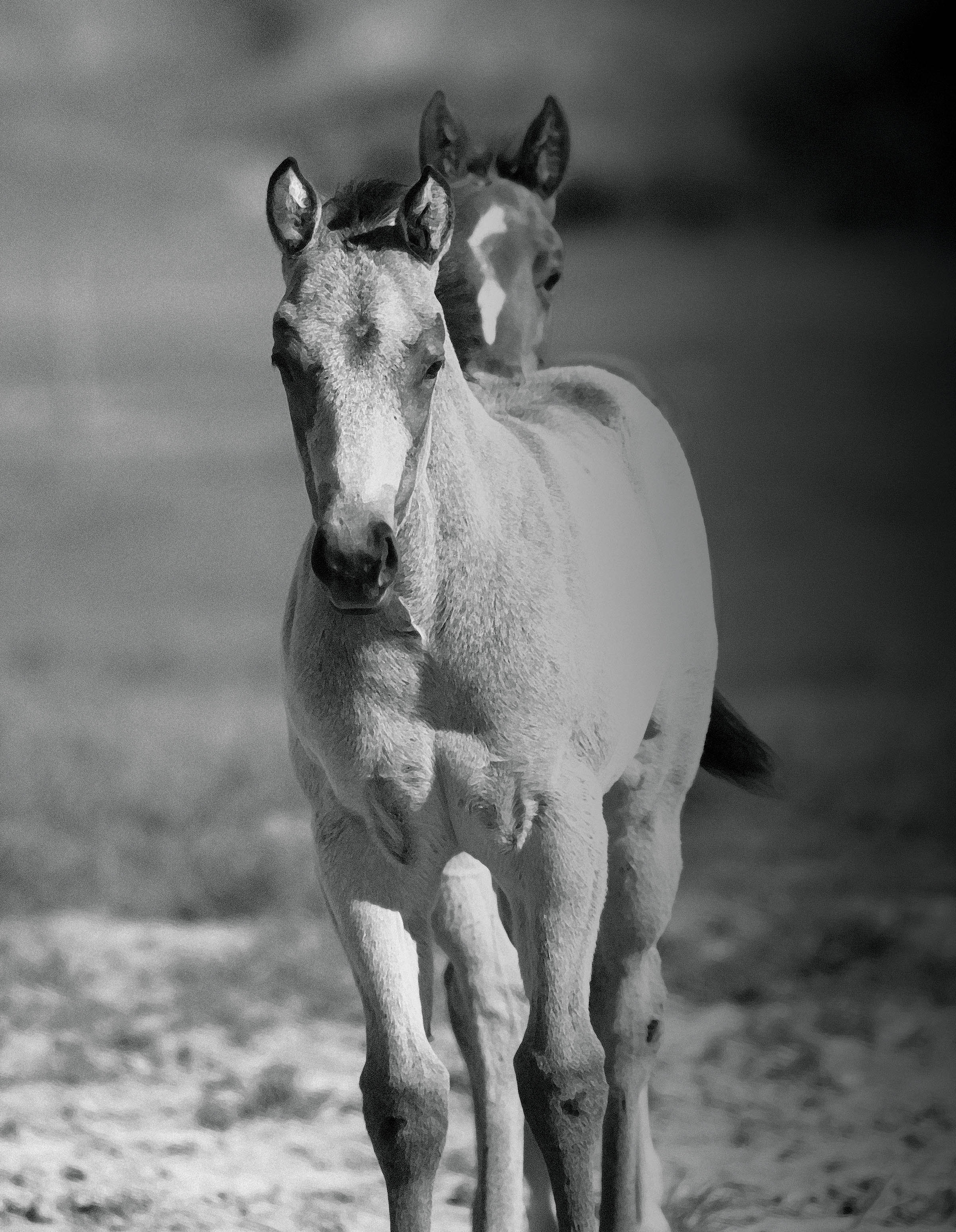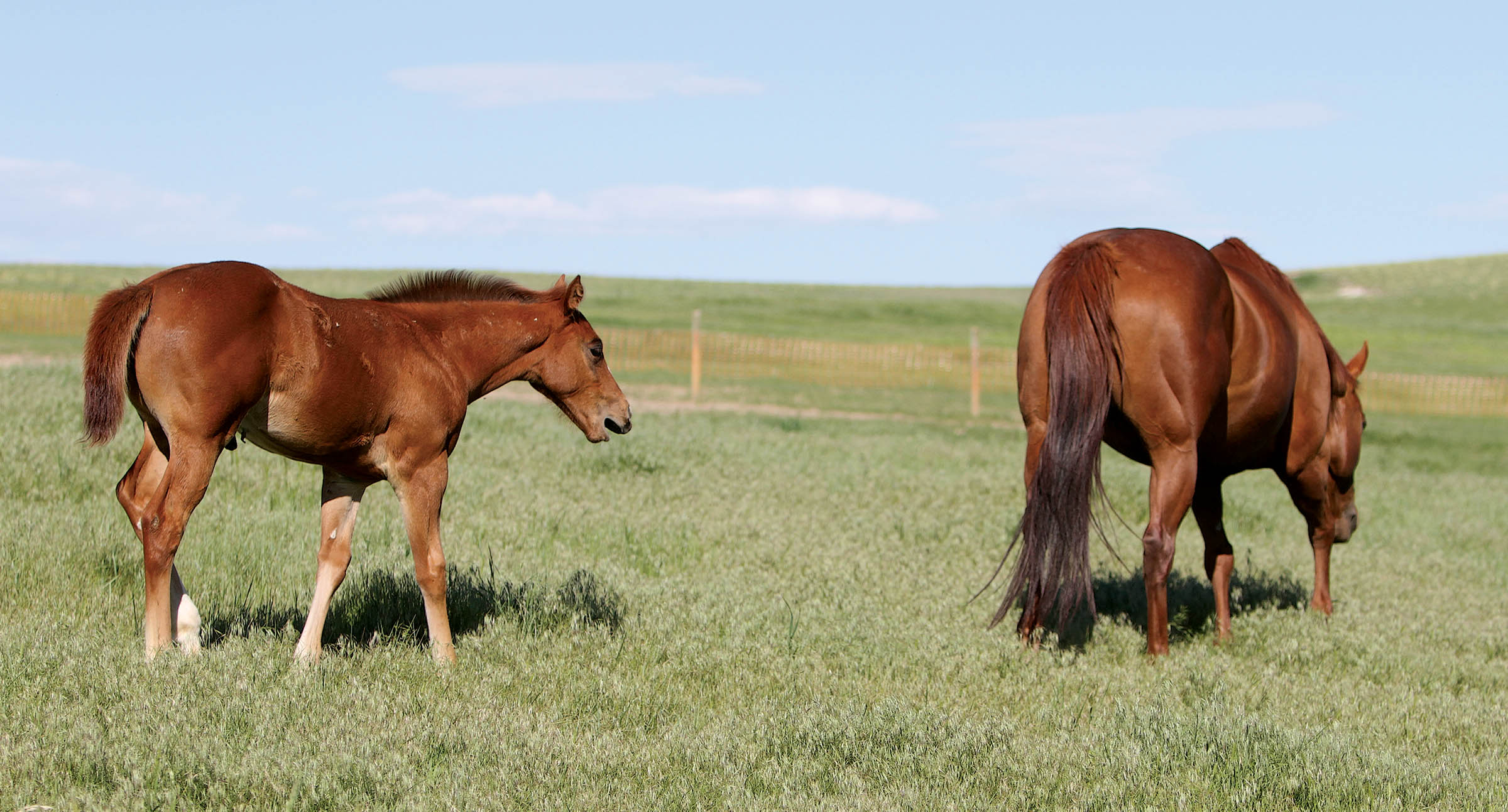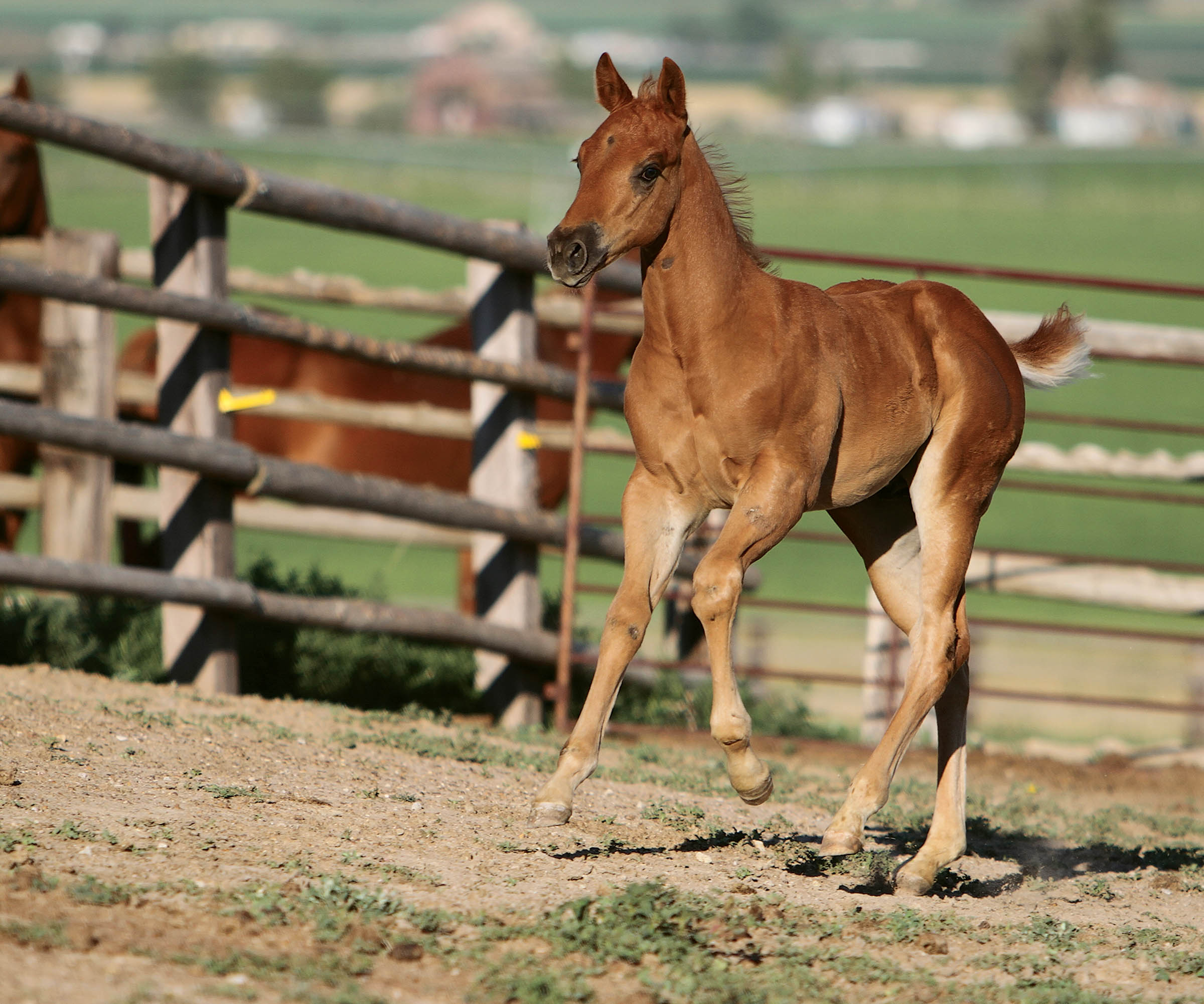
You’ve always wanted to breed your mare. She’s beautiful, sweet, and has been the perfect companion over the years. Now she’s 16 years old, and if you don’t breed her soon, it might be too late. Of course, you don’t have any trace of her registration papers, she has a clubfoot, and she’s hard to keep sound…oh, and you’ve never raised a foal on your own. Maybe you want to breed your mare…but should you?
That scenario might seem extreme, but it brings up the question of your desire versus the realities of breeding. The decision to breed a mare isn’t one to take lightly—it can be expensive and risky to bring a foal into the world, especially at a time when the plight of the unwanted horse continues to be one of the biggest problems the horse world faces.
With that in mind, there are some serious ethical questions to consider before you breed your mare. In this article, I’ll ask you six important, tough questions to help you decide whether breeding your mare is the right thing to do. Answer them honestly and thoughtfully, and you’ll arrive at the best answer for yourself, your mare, and your possible-foal-to-be.
Can You Afford It?
Breeding a mare doesn’t only consist of the stud fee (which can be exorbitant in itself, depending on your chosen stallion). It also includes veterinary bills to get your mare in foal. Most breeding is done with artificial insemination, and you can count on spending anywhere from $500 to $1,000 for a routine breeding cycle, depending on whether you use fresh or frozen semen and whether you’ll take your mare to your vet or breeding station, or have the work done at your own farm. Additionally, there are expenses associated with pregnancy and foaling, including extra vaccinations, setup required for the foaling event, and veterinary visits for your new foal. These costs are fairly predictable and easy to budget for, but they add up quickly.
What many people don’t take into account is that not everything in breeding goes as planned. For example, pregnancy rates can vary widely—depending on the fertility of the stallion and mare, and whether you choose to breed with fresh or frozen semen. What if she comes up empty after the first breeding attempt? Add another breeding cycle to your costs. And if she’s still not pregnant? Repeat. What if she requires extra diagnostics and treatment to get her in foal? Add a little—or a lot—more.
Finally, and most important, what if your mare experiences complications during or after foaling? A difficult delivery or a sick foal can rack up thousands of dollars in veterinary care. Are you prepared to pay the price? Keep in mind that as an ethical breeder you have a responsibility to provide the care your mare and foal require in case of an emergency.

Is She a ‘Quality Mare’?
You might love your mare, but does that make her a good candidate for breeding? If you intend to commit to keep (and care for) the foal forever, this question may not be as important, but that’s rarely the case. The best way to ensure that the foal that you produce will never end up in the ever-growing pool of unwanted horses is to ensure that the colt or filly is healthy, sound, and has the potential to be a solid performer—whether it’s in the show ring or on the trails.
If your mare is sound with good conformation, spectacular bloodlines, and a solid performance record there’s a good chance she’ll produce a quality foal, especially if she’s crossed with an equally outstanding stallion. If she’s sweet with “not quite ideal” conformation and you don’t know who her parents were, it’s pretty hard to predict what you’ll produce, no matter what stallion you choose.
Are you breeding your mare to produce your own “dream horse?” Think carefully before you do. Estimates are that it costs between $10,000 and $15,000 to produce and raise a foal to the point where it’s ready to ride. Until that time, you won’t know what you really have. Purchasing a horse might actually improve the odds you’ll end up with the right mount for you. Even some big-time breeders have the adage “breed to sell, buy to ride.”
Hats Off to AQHAWhile it’s true you “don’t ride their papers,” it’s a fact that affiliation with a registry can go a long way toward helping to ensure the foal you produce is healthy and “wanted,” even when it’s no longer yours.
Through several of its programs, the American Quarter Horse Association provides a great example of just how far a registry can go to protect you and the foal that you produce.
First, AQHA offers genetic testing for all of the genetic diseases known to affect Quarter Horses. They’ve even taken a stand to prevent the perpetuation of HYPP, one of the most prevalent of these diseases, by restricting registration of foals carrying this disease. Other registries also offer genetic testing, but few have yet to take as firm a stand as AQHA has on limiting registration.
AQHA also offers a program they call “Full Circle,” where breeders and owners of AQHA-registered horses can be notified when a horse they bred or owned changes hands or is in need of a long-term home. Through this program, you can rest assured your past horses have less of a chance of winding up in the “unwanted” pipeline.
Is She Free of Genetic Diseases?
There are a number of genetic diseases that impact horses, and it’s possible your mare could carry a gene for one of these diseases, even if she appears perfectly healthy. Genetic tests are available to identify many of these diseases such as hyperkalemic periodic paralysis (HYPP) in Quarter Horses, overo lethal white syndrome in Paints, and equine polysaccharide storage myopathy (PSSM) in a variety of breeds. If your mare is registered, the registry might offer genetic testing for the diseases carried by her breed. If she’s not, you’d be wise to do some homework about her bloodlines and consider testing for the diseases she could carry.
Obviously, if you identify a gene that’s guaranteed to result in problems in your foal, the ethical (and sensible) choice is to opt out of breeding. But what if your mare has “good conformation, spectacular bloodlines, and a solid performance record,” yet she’s a carrier for a genetic disease that’s mild or might not cause a problem? For example, if you identify a gene for a recessive trait and you opt to breed her to a stallion that’s been tested and isn’t a carrier, her foal won’t be affected. However, the gene could be passed to her offspring, and the disease could continue to be perpetuated in future generations.
Genetic testing makes decisions easier, but it doesn’t stop there. What if your mare has a condition that’s believed to be genetic, but the precise heritability hasn’t been clearly defined, such as a clubfoot, osteochondrosis, or recurrent uveitis? You won’t know for certain whether her foal will be affected, but there’s a chance it could.
Deciding to breed your mare if she has a genetic disease isn’t easy, and the answer isn’t always black or white. It’s one of the hardest questions you’ll have to answer when considering your choice, so be thoughtful in your choice.
Is She at Risk for Complications?
You love your mare, and want to produce a foal. Have you considered the possibility that she could die? While it’s true that a young, healthy mare should be able to produce a foal without a problem, as a breeder of a beloved mare you’re wise to think about the risks. Specifically, if your mare is 15 years or older, she’s at increased risk for a uterine artery rupture—a foaling complication that’s almost always fatal.
Your mare could be at greater than average risk for other complications, such as a uterine infection if she has a tipped vulva, or she could suffer post-foaling colon torsions if she’s very large. Ask your veterinarian to evaluate her condition and reproductive conformation and advise you about potential risks.

Are You Prepared to Care for Baby?
Have you considered that having a foal means…having full-time care of a foal? And that the foal will soon become a feisty yearling, then a rambunctious 2-year-old? While newborn foals are sweet and lots of fun, they also require a lot of care. Just as your house must be baby-proof when you have a child, your barn and pastures need to be foal-proof, with special attention paid to fencing, gates, stalls, and sheds to ensure they’re safe.
Handling young horses also requires time and skill. As veterinarians we see far too many difficult, unsafe horses that were raised by amateur handlers who didn’t know what they were doing. If you’ve never raised a foal, do your homework. Enlist the help of an experienced foal handler to guide you in correct methods for halter breaking and instilling good ground manners. If you plan to start your youngster under saddle, have a plan in place to get that going at the appropriate time. (And have the money to pay for it.) There’s nothing more disturbing than to see a 7-year-old, barely handled, difficult horse that has yet to be started under saddle because its breeder didn’t have the time, skills, or resources. There’s also no scenario more likely to lead a horse straight to the unwanted pipeline.
Ethical Breeding: The Veterinarian’s DilemmaWhen I was a young veterinarian, performance horses were my passion. I’d grown up in the show ring, and dreamed of being the veterinarian who diagnosed those hard-working horses’ soundness problems, provided appropriate treatment, and sent them back to the ring.
By the time I became a mid-career veterinarian, I found myself drawn to breeding work. After all, while a lame horse might get a “little bit better,” become “serviceably sound,” or require “a little management,” there’s just no such thing as “a little bit pregnant.” Either your mare is in foal or she’s not. Black or white.
It’s true that a lot of breeding work is black and white, but I’ve discovered the gray. These days I find myself asking not if I can get a mare pregnant, but should I? If I have a client who wants to breed a mare with a potentially heritable problem, or one who is ill equipped to raise a foal—should I do the work? Should I encourage horse owners to produce foals knowing there’s a good chance those horses may become unwanted? Just like you, when it comes time to make a decision whether or not to breed a mare, those are the questions I have to ask.
Will You Make a Lifelong Commitment?
American Horse Council’s Unwanted Horse Coalition estimates there are more than 170,000 unwanted horses in the United States. Many of these become unwanted because of financial or time constraints or simply because they fail to meet their owners’ expectations. Some could still have useful lives if they could be rehomed, yet they’re often abandoned, starved, or otherwise abused. The lucky ones find their way to rescue facilities or foster homes. Others starve to death or are euthanized.
If you produce a quality horse that’s healthy, sound, well-handled, and started under saddle, chances are your horse will always have a home and care. But even if you do the best you can, you still have to consider the possibility that any foal you produce has the potential to become “unwanted” unless you intend to make a lifelong commitment to its care.
What does this look like? Either you never sell that foal, or if you do, you keep track of where it goes for the rest of its life and offer a home if one is ever needed. Although this isn’t always as easy as it sounds, as a breeder you can consider including a buy-back clause with any sales agreement and offer a retirement option for the horses you produce.






